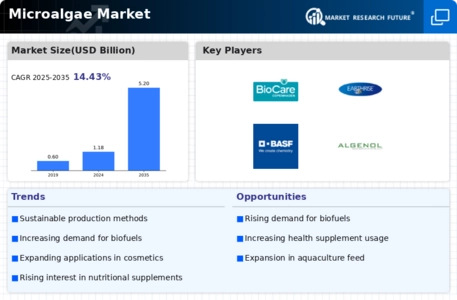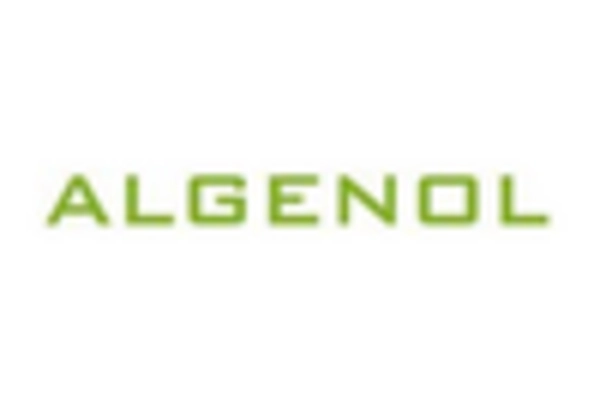Market Analysis
In-depth Analysis of Microalgae Market Industry Landscape
The Microalgae Market is experiencing dynamic trends, reflecting the expanding applications and growing recognition of microalgae as a sustainable and nutrient-rich resource. One significant trend is the rising demand for microalgae-based products in the food and beverage industry. Microalgae, such as spirulina and chlorella, are rich in proteins, essential fatty acids, vitamins, and antioxidants, making them valuable ingredients in functional foods, nutritional supplements, and health-focused beverages. As consumers increasingly prioritize plant-based and nutrient-dense options, microalgae's nutritional profile positions it as an attractive choice for those seeking sustainable and health-enhancing ingredients.
Sustainability is a key driver shaping the Microalgae Market. Microalgae are known for their high photosynthetic efficiency and the ability to grow in diverse environments, including wastewater and non-arable land. This makes them a sustainable source of nutrition, requiring fewer resources compared to traditional crops. As sustainability gains prominence in consumer preferences, the market is witnessing a shift towards microalgae-based products, aligning with the broader movement towards environmentally friendly and responsibly sourced ingredients.
The market is experiencing diversification in product applications beyond food and beverages. Microalgae are finding applications in sectors such as cosmetics, pharmaceuticals, and biofuels. In cosmetics, microalgae are valued for their bioactive compounds, which can have anti-aging, moisturizing, and skin-soothing properties. In the pharmaceutical industry, microalgae are explored for their potential as sources of bioactive compounds with therapeutic properties. Additionally, microalgae's ability to produce lipids and oils makes them a promising candidate for sustainable biofuel production, contributing to the market's expansion into diverse industrial sectors.
Microalgae are gaining attention as a solution to global malnutrition and food security challenges. Their nutritional richness, rapid growth rate, and adaptability to various climates make them a viable option for addressing nutritional deficiencies in populations worldwide. As a source of protein, vitamins, and minerals, microalgae can contribute to improving the nutritional content of diets, especially in regions facing food insecurity. This trend reflects a growing awareness of microalgae's potential to play a role in addressing broader global health and nutrition concerns.
Technological advancements are driving innovation in the Microalgae Market. Advances in cultivation techniques, harvesting methods, and extraction technologies are improving the efficiency and scalability of microalgae production. These advancements contribute to the commercial viability of microalgae-based products, making them more accessible to a broader market. Additionally, innovations in genetic engineering are enabling the customization of microalgae strains to enhance specific desirable traits, further expanding their applications in various industries.
Consumer awareness and education play a crucial role in shaping the Microalgae Market. As consumers become more informed about the health benefits and sustainability aspects of microalgae, there is a growing acceptance and interest in incorporating microalgae-based products into their diets. Companies in the market are actively engaging in educational initiatives to showcase the nutritional advantages and ecological benefits of microalgae, fostering a positive perception among consumers.
The digital era contributes to the market's growth by providing a platform for communication, marketing, and e-commerce. Online platforms enable microalgae producers to reach a global audience, communicate their brand stories, and educate consumers about the advantages of microalgae. E-commerce channels facilitate the direct sale of microalgae-based products to consumers, enhancing accessibility and creating new market opportunities.










Leave a Comment